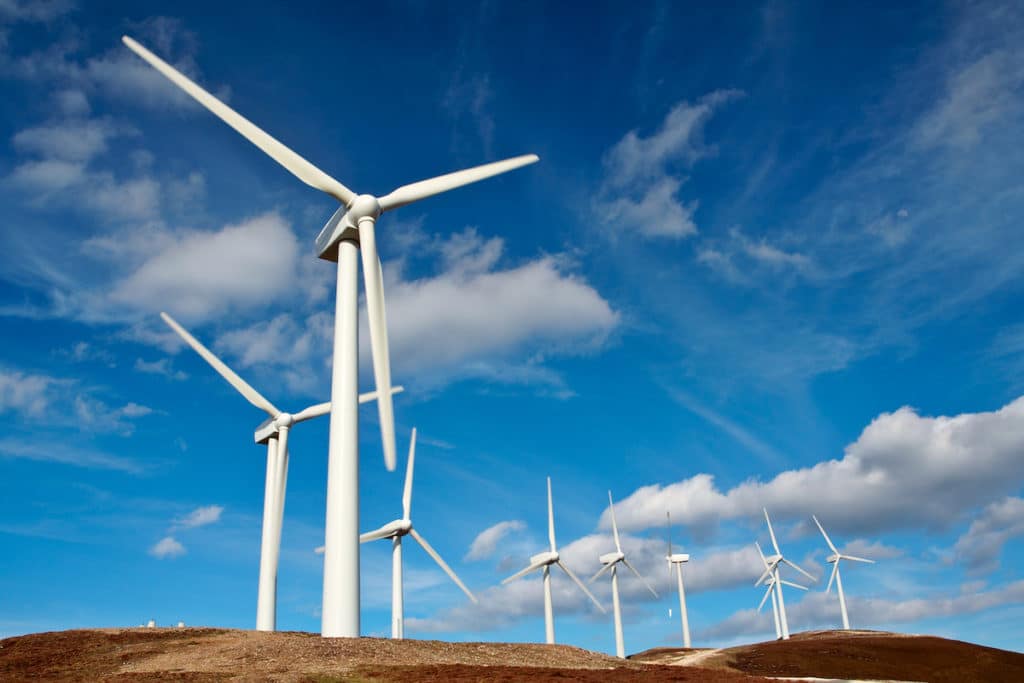The idea of renewable energy dominates a lot of public policy discussions these days. People are concerned about the way we obtain power and energy. Everything—from the homes we buy to our appliances, to cars — is cloaked in discussion of saving and conserving energy. Here at Remsa USA, we work with a variety of industries including the oil and gas industries, mining, and wind and renewable energy. This country is seeing a lot of innovation in this sector and we thought we’d revisit some fun facts about wind and how this natural element is at the center of some pretty exhilarating advancements.
Harnessing the power of wind is nothing new. It can be seen as early as the 1600s when the famous Don Quixote challenged them to a fight in the famous literary work. You might remember how the great Don Quixote charged one of these powerful windmills thinking that they were giants about to attack him. It’s likely that the windmill might have been used for grain, but even then, people understood that the power of the wind was useful and valuable. Most wind turbines don’t attack humans, of course, let it be known. Human civilization has been using the wind’s energy for hundreds of years. Early versions of windmills used wind to crush grain or pump water. These early prairie windmills are no match for today’s technology advanced structures, but the idea was similar. Wind turbines today are used to create electricity that is used throughout the country.
So next time you find the El Paso winds as a bit of a nuisance, think about how a wind turbine farm somewhere is producing some clean energy! This might make those pre-Spring winds somewhat more bearable. These turbines are pretty efficient because, over the course of the year, they produce electricity about 90 percent of the time. As wind speeds increase, the production of this energy will also increase.
So what is wind energy?
It’s clean, free, and inexpensive to harness! Wind power is achieved by creating electricity using the wind or air flows that occur in the earth’s atmosphere. Wind energy actually provides about 10% of total electricity in at least 14 states. Modern wind turbines are used to catch kinetic energy from the wind and generate electricity. You can separate wind energy into three main types:
Utility-scale wind: Refers to wind turbines that range in size from 100 kilowatts to several megawatts.
Distributed or small wind: This refers to single small wind turbines below 100 kilowatts that are used to power a home, small farm, or a commercial enterprise without being connected to the grid.
Offshore wind: These are the wind turbines that you may have seen out on the coast or the ocean. These can generate more power because they are typically larger than any on-land turbines.
How exactly does a wind turbine work?
The idea is pretty straightforward and why even the early windmills had a similar design. When the wind passes, the blades will capture the kinetic energy and while rotating takes that energy and turns it into mechanical energy. The wind power converts into electricity by magnets moving past stationary coils of wire. There is a gearbox in the turbine which sends the wind energy to the generator and makes the magic happen. This can charge batteries and turn into useful electricity.
Most of these structures will stand about 80 feet tall, some 190 -295 feet tall. Don Quixote would have a tough type against one of these. Inside the turbine, there is a gearbox, which can increase the speed of rotation. As soon as the wind speeds pick up to about six to nine miles an hour, which is sometimes referred to as ‘cut-in’ speed. This well-engineered structure will also shut down if the wind reaches very high speeds, around 55 miles an hour. This prevents damage to the equipment and other hazards.
It might be important to note that Don Quixote’s windmill and today’s modern turbines are two very different species. The structures you see today if you drive by places like Oklahoma and other states, you will find a complicated structure that contains up to 8,o00 components. The names windmill and wind turbine might often be used interchangeably, but they do have some key differences. People have used windmills for centuries to do things like grind grain, pump water, and do other work.
The Benefits of Wind Energy
Industries and companies who are interested in producing reliable forms of energy will find that wind energy has several benefits.
- This is one of the most cost-effective options in energy production
- Turbine installation can be relatively easy to install
Here at Remsa USA, we have seen the innovative advancements that some of these industries are working with. We are here to support and offer quality field services for people across many industries, including the wind and energy sector. Learn more on our website.
